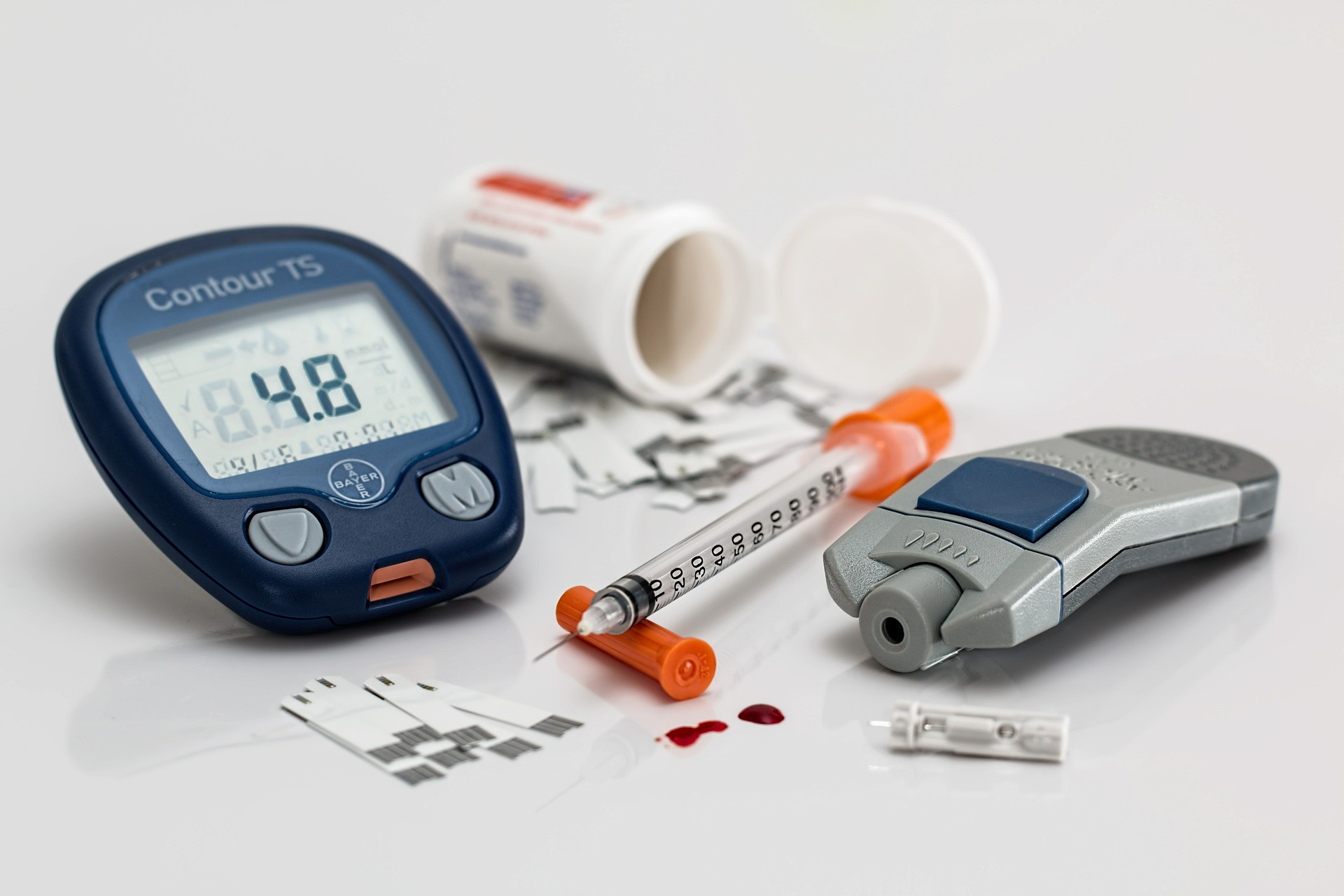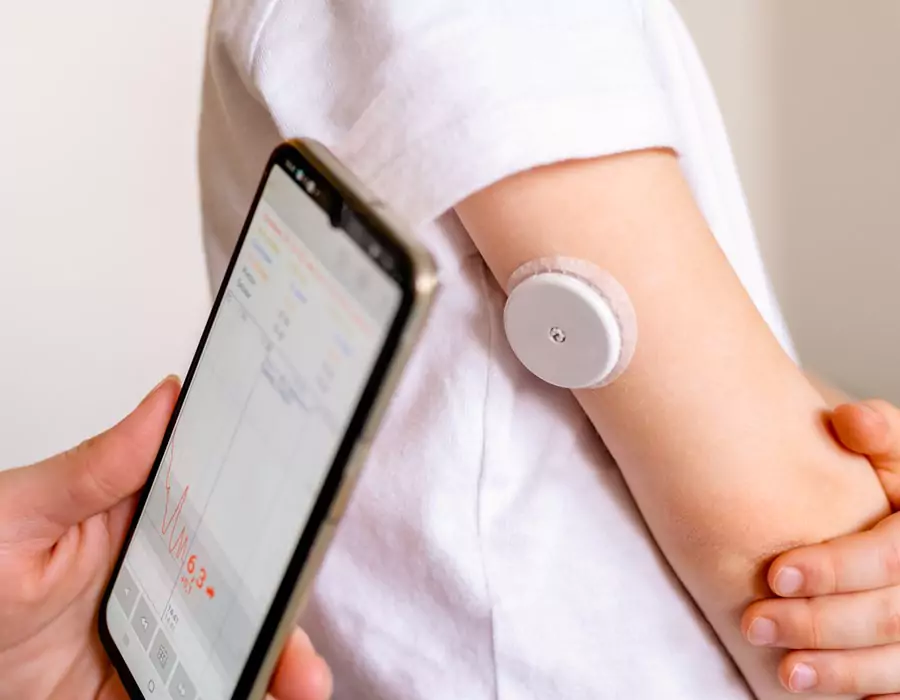





Learn about 4 Types of Diabetes Tests - Complete Guide


Table of Contents
- Types of Diabetes Tests
- Fasting Plasma Glucose Test (FPG)
- What Is the Fasting Plasma Glucose Test (FPG)?
- How Is the Fasting Plasma Glucose Test Done?
- What Results Are Possible?
- Oral Glucose Tolerance Test (OGTT)
- What Is the Oral Glucose Tolerance Test (OGTT)?
- How Is the Oral Glucose Tolerance Test Done?
- What Results Are Possible?
- HbA1C Test
- What Is the A1C Test?
- How Is the A1C Test Done?
- What Results Are Possible?
- Random Blood Sugar Test (RBS)
- What to Expect During a Diabetes Test
- Preparing for a Diabetes Test
- What to Do Before the Test:
- What to Bring to the Test:
- What to Expect Afterward:
- Monitoring Diabetes Tests
- How Often You Should Get Tested:
- What the Results Mean:
- What to Do with the Results:
- Conclusion
- About The Author
Living with diabetes is a serious responsibility and testing for it is an essential part of managing the condition. There are several types of diabetes tests available that can help you and your doctor understand your condition better and to make sure it is being managed properly.
In this guide, we will be discussing the four main types of diabetes tests and how they can help you better understand and manage your diabetes.
Types of Diabetes Tests
When it comes to testing for diabetes there are a variety of tests that can be used to diagnose and monitor the condition. The four main types of diabetes tests are the fasting plasma glucose test (FPG) the oral glucose tolerance test (OGTT) the A1C test and the random blood sugar test (RBS).
Each of these tests is used to detect various levels of glucose in a person and each has its own advantages and disadvantages. Let’s take a look at each test in more detail.
Fasting Plasma Glucose Test (FPG)
The fasting plasma glucose (FPG) test is a type of diabetes test that measures the level of glucose (sugar) in the blood. This test is commonly used to diagnose diabetes as well as to screen for prediabetes.
It is recommended that all individuals over the age of 45 get this diabetes test or individuals under the age of 45 who have risk factors for diabetes. The FPG test measures the amount of glucose in your blood after you have gone at least 8 hours without eating or drinking. The test does not require any special preparation and is usually done in a doctor’s office or lab.
What Is the Fasting Plasma Glucose Test (FPG)?
The FPG test is a simple and easy way to measure the amount of glucose in your blood. The test requires a blood sample which is collected from a vein in your arm or from a finger prick. The sample is then sent to a lab to be tested.
How Is the Fasting Plasma Glucose Test Done?
The FPG test is usually done in a doctor’s office or lab. The test requires a blood sample which is collected from a vein in your arm or from a finger prick.
The sample is then sent to a lab to be tested. The test results are usually available within a few hours. Your doctor will review the results with you and explain what they mean.
What Results Are Possible?
The results of the FPG test will show the amount of glucose in your blood. A normal fasting glucose level is between 70 and 100 mg/dL (milligrams per deciliter). If your results show a fasting glucose level of greater than 126 mg/dL, it may indicate that you have diabetes.
A glucose level of between 100 and 125 mg/dL may indicate prediabetes. Prediabetes means that your blood glucose levels are too high but not yet high enough to be diagnosed with diabetes. Prediabetes increases your risk for developing diabetes and other serious health conditions. Your doctor may also recommend other tests if your FPG results are not clear.
These tests may include an oral glucose tolerance test (OGTT) or an A1C test. The FPG test is an important tool for diagnosing diabetes. It is a simple, easy and quick way to measure the amount of glucose in your blood. Knowing your results can help you and your doctor make informed decisions about your health.
Oral Glucose Tolerance Test (OGTT)
The Oral Glucose Tolerance Test (OGTT) is an important tool for diagnosing and monitoring diabetes. It is used to determine if a person has diabetes or prediabetes as well as to monitor the progress of their diabetes treatment.
The OGTT measures blood glucose levels after the person has fasted for 8 hours and then again 2 hours after drinking a glucose-containing drink.
What Is the Oral Glucose Tolerance Test (OGTT)?
The Oral Glucose Tolerance Test (OGTT) is a test used to diagnose diabetes and prediabetes. It is also used to monitor the progress of diabetes treatment.
The OGTT measures a person’s blood glucose levels after they have fasted for 8 hours and then again 2 hours after they have ingested a glucose-containing drink.
How Is the Oral Glucose Tolerance Test Done?
The OGTT is done in a laboratory, hospital or doctor’s office. Before the test the person must fast for 8 hours. During the test the person will be asked to drink a glucose-containing drink.
Then, a blood sample will be taken 2 hours after the glucose drink has been consumed. After the blood sample is taken the person may eat and drink normally.
What Results Are Possible?
The results of the OGTT depend on the person’s fasting blood glucose level and the two-hour post-glucose drink level. If the person has a fasting glucose level of more than 126 mg/dl or a two-hour glucose level of more than 200 mg/dl they will be diagnosed with diabetes.
If the person has a fasting glucose level of more than 100 and less than 126 mg/dl or a two-hour glucose level of more than 140 and less than 200 mg/dl they will be diagnosed with prediabetes.
If the person has diabetes the OGTT results can help indicate the extent of the diabetes and the effectiveness of their diabetes treatments. The OGTT will also help provide a baseline for monitoring any changes in their diabetes over time.
For people with prediabetes, OGTT results can help determine their risk for developing diabetes. This test can also be used to monitor the effectiveness of lifestyle changes that the person is making to reduce their risk of developing diabetes. The Oral Glucose Tolerance Test (OGTT) is an important tool for the diagnosis and monitoring of diabetes.
It measures a person’s blood glucose level after they have fasted for 8 hours and then again 2 hours after they have ingested a glucose-containing drink. The OGTT results can help diagnose diabetes or prediabetes and can be used to monitor the progress of diabetes treatment.
HbA1C Test
The A1C test is a simple blood test that measures a person’s average blood sugar levels over the past two to three months. It’s used to diagnose diabetes and to determine how well the condition is being managed. It’s also the best way to know if the current diabetes treatment plan is working.
What Is the A1C Test?
The A1C test is also known as a glycosylated hemoglobin test or hemoglobin A1C. It measures the amount of hemoglobin in the blood that has been “glycated.” Glycation is a process in which sugar molecules attach to proteins such as hemoglobin.
The higher the sugar level in the blood the more sugar is attached to the hemoglobin. The A1C test measures the amount of sugar that has been bound to the hemoglobin over the past two to three months.
How Is the A1C Test Done?
The A1C test is a simple blood test. It is done in a laboratory or doctor’s office. It involves a finger prick or a blood draw from a vein in your arm. The sample is then sent to a lab for analysis.
What Results Are Possible?
The results of the A1C test range from 4.0 to 6.5%, with 4.6-5.7% being considered the normal range. If the result is 5.7-6.4%, it indicates pre-diabetes. A result of 6.5% or higher indicates diabetes. A result of 7% or higher indicates poor diabetes control, while a result of 9% or higher indicates very poor diabetes control.
The A1C test can also be used to track the effectiveness of a diabetes treatment plan. If the A1C test result is 7.5% or higher after three months of diabetes treatment, your doctor may recommend changes to the treatment plan. It’s important to note that the A1C test results may vary depending on certain factors such as the patient’s age, race and lifestyle.
For example, a person with a higher body mass index (BMI) may have higher A1C test results than someone with a lower BMI. The A1C test is a valuable tool for diagnosis and monitoring of diabetes. It’s important to discuss your results with your doctor and to understand what your results mean for your health.
With a better understanding of your diabetes and the importance of routine diabetes testing, you can make the necessary lifestyle changes to help manage and control your diabetes.
Random Blood Sugar Test (RBS)
The Random Blood Sugar Test (RBS), also known as the Random Plasma Glucose Test, is a type of diabetes test used to assess the amount of glucose in the blood. This test can be done at any time, without the need for fasting. It is most commonly used in the diagnosis of diabetes and to help monitor diabetes management. The Random Blood Sugar Test is a simple procedure.
It involves taking a small sample of blood from the finger, arm or hand and testing it for glucose levels. The test itself takes just a few minutes and involves a simple finger stick with a lancet. The finger is then wiped with an alcohol pad and a small blood sample is taken and placed onto a test strip.
The test strip is then inserted into a glucose meter which will measure the amount of glucose in the sample. The results of the Random Blood Sugar Test can be used to diagnose diabetes or to help monitor those who already have diabetes.
A glucose level of 200 mg/dL or higher, indicates diabetes. Additionally, if the result is between 140 and 199 then it is indicative of pre-diabetes and the patient should follow up with their doctor for further testing and/or treatment.
For those who already have diabetes the Random Blood Sugar Test can be used to monitor the effectiveness of their glucose management. If the results of the test are higher than expected then it can be an indication that the diabetes management plan is not working as intended and should be adjusted. Conversely, if the results are lower than expected then it can be an indication that the diabetes management plan is working well and should be maintained.
When undergoing a Random Blood Sugar Test there are a few things to keep in mind. First, it is important to make sure the test is performed correctly in order to get accurate results. Additionally, it is important to keep track of the results as they can be used to track progress over time and help to adjust diabetes management plans.
Finally, it is important to follow up with your doctor if the results are higher than expected in order to get the appropriate treatment. The Random Blood Sugar Test is an important and useful tool in the diagnosis and management of diabetes.
It is a fast and simple test that can be used to diagnose diabetes or to monitor those who already have diabetes. With the help of this test, diabetes patients can have peace of mind knowing that their diabetes is being managed correctly and effectively.
What to Expect During a Diabetes Test
When it comes to diabetes tests, knowledge is power. Knowing what to expect during your diabetes test can help you feel more prepared and less anxious. Knowing the steps in the testing process as well as what to expect afterwards can go a long way in ensuring your test results are accurate and meaningful. The first step in the testing process is usually a physical exam. During this exam, your doctor will check your blood pressure, pulse, weight and waist size.
They may also check for signs of poor circulation or nerve damage. This will help them get a better picture of your overall health. After the physical exam, your doctor may order specific tests to determine if you have diabetes.
These tests include a fasting plasma glucose test oral glucose tolerance test, A1C test and random blood sugar test as discussed above. After all of the tests have been completed, your doctor will explain the results and provide you with a diagnosis.
They will also provide you with information about how to manage your diabetes, if applicable. When it comes to diabetes tests, it is important to ask your doctor any questions you may have. Don’t hesitate to ask about the test procedure and any possible side effects. It’s also important to understand the results of the test and what they mean for your health.
It is important to prepare for diabetes tests and be aware of what to expect during the process. Knowing the steps in the testing process as well as what to expect afterwards can help you feel more informed and prepared. With the right knowledge and preparation, you can ensure your test results are accurate and meaningful.
Preparing for a Diabetes Test
Whether you have been diagnosed with diabetes or you're undergoing testing to see if you have the condition, it’s important to be prepared. Diabetes tests can be daunting so it can be helpful to know what to expect and how to prepare.
What to Do Before the Test:
Prior to your diabetes test, it’s important to talk to your doctor and make sure to ask any questions you may have. During this appointment, make sure to ask about fasting requirements for the test and any medications you may need to stop taking prior to the test.
Additionally, if you have diabetes, make sure to let your doctor know about any other conditions you may have as this can impact the results of the diabetes test.
What to Bring to the Test:
When you go for your diabetes test, it’s important to bring a few items. Make sure to bring your current medications, insurance information and a snack or drink if you’re fasting for the test.
Additionally, you should also bring a list of any questions or concerns you have in case you don’t get a chance to ask them during the appointment.
What to Expect Afterward:
After the diabetes test, it can take anywhere from a few days to a few weeks before you get your results. It’s important to contact your doctor to find out when you can expect to receive your results as well as what you should do if the results are abnormal. Additionally, if the test is abnormal, your doctor may need to perform additional tests so it’s important to ask about the next steps in the process.
After the test is completed, it’s important to discuss the results with your doctor. Make sure to ask any questions you may have about the results and inquire about lifestyle changes you can make if your results indicate you have diabetes.
Additionally, it’s important to stay up to date on your diabetes tests and make sure to get tested regularly as this can help prevent complications from the condition. Overall, it’s important to be prepared for your diabetes test. Make sure to talk to your doctor beforehand and ask any questions you may have.
Additionally, don’t forget to bring your medications, insurance information and a snack if you’re fasting. After the test is done, don’t forget to discuss the results with your doctor as well as ask about lifestyle changes you can make if you have diabetes.
Monitoring Diabetes Tests
For those who have been diagnosed with diabetes, it is important to regularly monitor their condition with testing. Not only does testing help to ensure that diabetes is managed correctly but it also provide an important insight into overall health as well.
How Often You Should Get Tested:
It is recommended that people with diabetes get tested at least twice a year. It is important to get tested more often if blood glucose levels are not under control.
As such, it is important to consult with your doctor to determine the best testing schedule for your condition.
What the Results Mean:
The results of diabetes tests will provide important information about blood glucose levels. In general, it is important to maintain blood glucose levels below a certain threshold.
If the results of a diabetes test are higher than this threshold, it is important to speak to your doctor about possible changes to diet or medication.
What to Do with the Results:
It is important to take action on the results of diabetes tests. If the results are within the normal range, it is important to continue managing diabetes in the same way. However, if the results are outside the normal range, it is important to speak to your doctor about possible changes that can be made to diet or medication.
In addition, it is also important to keep track of the results of tests over time. This will help to provide a snapshot of how diabetes is progressing over the long term. This information can be used to help inform decisions about diet, exercise and medication.
Monitoring diabetes tests is an important part of managing diabetes. It is important to get tested regularly and to follow up with a doctor after a test. By taking the results of tests seriously, people with diabetes can ensure that their condition is managed properly.
Conclusion
Diabetes tests are an important part of managing your condition and maintaining good health. Knowing the various types of tests and what they are used for can help you to be better informed and prepared when visiting your doctor.
The four most common tests used to diagnose diabetes are the fasting plasma glucose test the oral glucose tolerance test the A1C test and the random blood sugar test. Each of these tests is used to determine the amount of sugar in your blood and the results of each test can help your doctor to diagnose or monitor your diabetes.
It's important to remember to follow the doctor's instructions for each diabetes test, including preparing for the test and monitoring the results. Before the test, it may be necessary to fast for a certain period of time or eat a specific food; it's important to follow your doctor's instructions carefully.
After the test, you should ask your doctor about the results and what you should do if they are abnormal. Overall, it's important to stay informed about the various types of tests used to diagnose and monitor diabetes.
Knowing about the tests and what to expect when going for a diabetes test can help to ensure that you get the best possible care. Working with your doctor to ensure that you are getting tested at the right times and receiving the right advice can help to ensure that your diabetes stays under control.
About The Author
Meet Dr. Ahmet Ergin a highly skilled and dedicated endocrinologist with a passion for diabetes care. Dr. Ergin earned his medical degree with honors from Marmara University in Istanbul. He completed internal medicine residency and endocrinology fellowship at Cleveland Clinic.
Dr. Ergin is board-certified in Internal Medicine, Endocrinology, Diabetes and Metabolism due to his vast medical expertise. He's a certified diabetes educator, author of "The Ultimate Diabetes Book," and founder of "the SugarMD YouTube channel."
Dr. Ergin offers exceptional diabetes care to his patients in Port Saint Lucie, FL, helping them manage effectively. Disclaimer: These statements have not been evaluated by the Food and Drug Administration. Information on this website isn’t intended to treat, cure or prevent any disease. Discuss with your doctor and do not self-treat.
Written By Dr. Ahmet Ergin
460 total articles
Meet Dr. Ahmet Ergin, a highly skilled and dedicated endocrinologist with a passion for diabetes care. Dr. Ergin earned his medical degree with honors from Marmara University in Istanbul. He completed internal medicine residency and endocrinology fellowship at Cleveland Clinic. Dr. Ergin is board-certified in Internal Medicine, Endocrinology, Diabetes, and Metabolism due to his vast medical expertise. He's a certified diabetes educator, author of “The Ultimate Diabetes Book,” and founder of “the SugarMD YouTube channel.” Dr. Ergin offers exceptional diabetes care to his patients in Port Saint Lucie, FL, helping them manage effectively. For a closer look into his insights and experiences, connect with Dr. Ahmet Ergin on LinkedIn, Instagram, and YouTube.”
Disclaimer: These statements have not been evaluated by the Food and Drug Administration. Information on this website isn't intended to treat, cure or prevent any disease. Discuss with your doctor and do not self-treat.
Products











